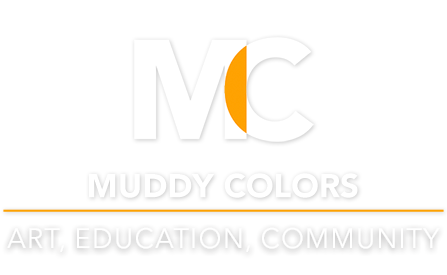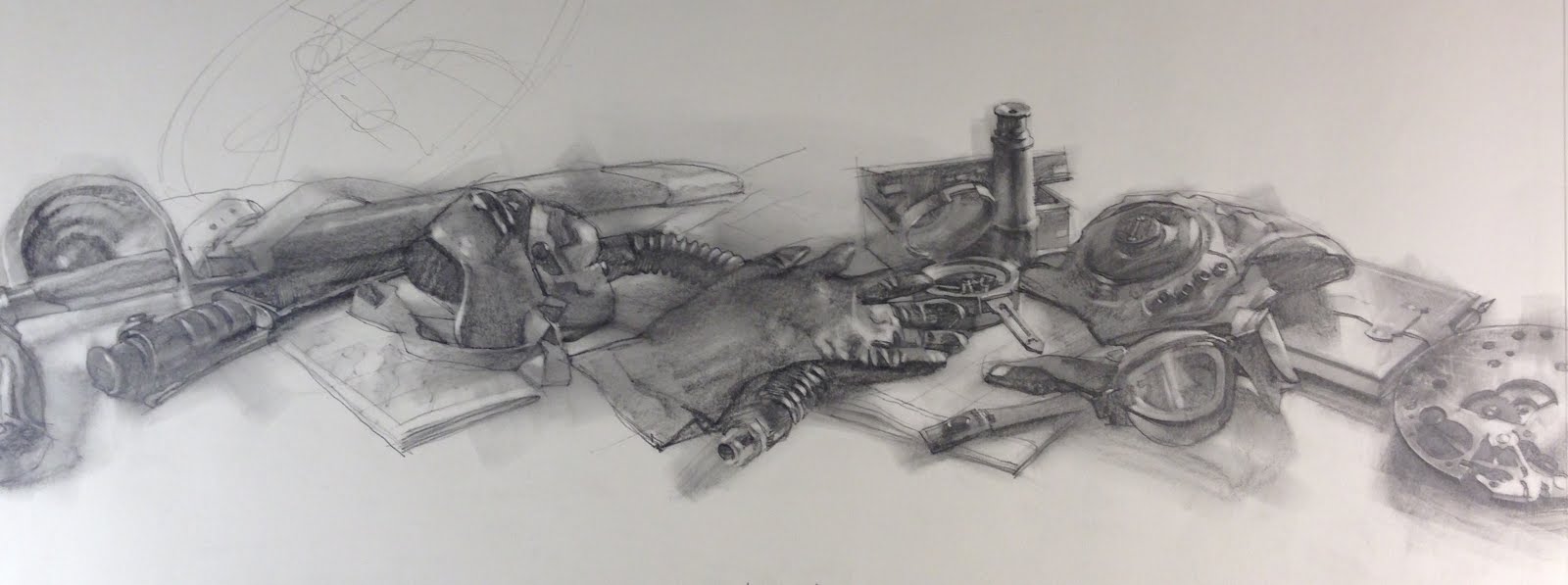So you’ve decided to freelance and lo and behold, you got your first assignment. Good job! It may have been a struggle to get the commission, but now is when the work really starts, and if you’re considering doing this for, oh, I dunno…your life, then you’re going to need these points. This is how you’re going to build a good working reputation. The kind that gets you more work.
Stop looking at me like that. I may be older than you, but don’t go high-school on me and think those dang adults are so stuck in their ways even in today’s hyper-hipster advanced world. The client hired you because they want what you showed them in your book. You were hired by adults and you’ll quickly learn that they expect you to be like them. You’d better hope to heaven you can act like one.
Because every move you make from here on out will be scrutinized. If not on a macro level, then clandestinely, on some sub-quantum antimatter particulate level. Here’s where you’re gonna shine by getting this stuff into your chemistry. Especially if things get all fouled up.
And they will. Get fouled up. Sometimes so badly, you feel the actual weight of the planet leaning on your ear. But if you’ve set them up right, and you bring out The Genuine, you’ll survive. You’ll make it. And live to tell about it while you are getting more calls.
Save all the snark for the Prima Donna’s. They burn out quickly and leave smoke trails you could follow like tracer bullets back to all the enemies they create.
Don’t. Be. That. Guy.
Nail the deadline.
You need a date. A hard date. This is the first thing to inquire. This will determine whether you’ll be racing to meet it, or taking your time. (most cases: you’ll be racing to meet it.) Make a plan to meet or exceed that expectation. You will either hit the mark squarely, or you will be early. Yes, early. You read that right.
Make it your current life’s ambition to hit that deadline. Do not, repeat do not act as if this is a ‘soft’ deadline. That the client is “padding” the actual deadline to cover their butt. That it’s not the ‘real’ deadline.
They pad the deadline so they can meet their own deadline, get it? So your first thought is to stop thinking and planning their job for them. You need to focus on only one thing: the deadline they told you. That’s the actual deadline. When you hit yours, they hit theirs, and everyone goes home happy.
Nail the format.
Cover? Spot? Double-page spread? Vignette? Horizontal? Vertical? You may think this is obvious. It may be, but it’s always smart to talk it over. It’s always best to discuss how your work will fit into the space allotted. Think it’s a waste of breath? Think again.
Sometimes during these discussions a client suddenly realizes how to fix something they’ve been wrestling with while visualizing the project. And you may’ve just helped them solve it. (I once had a job that was an inside spread for a magazine. I had no problem with getting the specs down, what they needed. But I was also fired up and drew an extra thumbnail and suggested it could possibly be used for the cover. The head AD loved the idea and gave me that assignment as well. That’s how I got my first cover on TIME Magazine.)
This is the part where you listen. Let them speak. Let them explain their vision. You will be the one to bring it to light. (if you listen well and speak well, the client may start to think they’ve lucked out by finding you)
Thumbnails to start.
Start with thumbnails for you. Pick the ones you like the best and work them up into a little larger and clearer size. Hone them down to the best three or so. Only then show them to the client. On a first assignment like this, you might want to show them a bunch for discussion.
Number them. You’ve got to have a pointer to the differences in the sketches. In my online classes it is required that sketches be numbered. It makes the discussion easier. Adults like it when discussions are easier.
One trick to learn. Try not to show them any idea that you really don’t want to do. They will inevitably pick that one. You will be miserable. This adds time to the deadline. Because of all the therapy you’ll be sitting through.
Small sketch.
Work up the one or two that they want to see into a still larger sketch for approval at this stage. This is the one where you’ll work out many of the kinks. It starts to pull together at this stage. You do this so that there are no surprises for the client, and especially for you. Once they say ‘go,’ you’ll move on to gathering reference for the final sketch.
Final sketch.
This is the part where you do the sketch at actual printing size. Example, if it’s a book cover, you’ll draw the sketch at the actual size of the cover, generally 6” x 9”. This way, the client gets to see where everything is placed, where the problem spaces for type will be, and how they’ll have to solve it. Expect more tweaking at this stage. There could be big changes. That’s ok. Grit your teeth. Grin. Nod your head. Don’t speak. (Nope. Don’t you dare send that email.)
Just draw. This shows you are not only versatile, but cool-headed. This is gold.
Working with the client.
You’ve gotten the ‘go-ahead’ from your client and you’re going to paint, scratch, draw, digitize, whatever. (You might give them a color comp/sketch for them here. It’s up to you, generally. Lots of digital guys just go straight to working in color from the start.)
Follow the damn sketch you gave them. Do not deviate. If they ask you to give them what you drew but want you to feel free to ‘improvise’….don’t you believe it, Schmedly. ‘Improvise’ means render a little more here, let that edge go there, but do not change position of elements or overall concept.
Give them what they are asking for within your style constraints. Give them what they came to you for. Give them what they need. Deviate from this at your own risk. But I swear you’ll be back in therapy before you know what hit you.
This middle part of the job is where things can fall apart and it’s best for you to keep an open mind about the process. They have higher-ups that they need to clear things with. You are working with a team, combining your efforts with theirs. All of theirs. Or didn’t you pick up on that when I mentioned “Client?” You work for them. You may feel like a hired wrist, but that’s illustration. Brilliant work comes out of restricted spaces that stretches beyond its limitations.
If you want to just ‘do what you do,’ then go show in a gallery. Illustration hasn’t got time for that.
Sending the finish.
If you paint digitally, then this step is no big shakes for you. You send a copy of the file you’re working on. No big.
Just remember that they know that digital painting can be changed. Forever. You knew that, right? You think regular painting is never done? What were you thinking when you decided to skip the ‘traditional’ route and go semi-conductor?
If you paint in analog, then get a decent shot of the original and send the shot to the client with appropriate notes. Don’t stick it outside in the sun to shoot it with your phone camera, and don’t send the entire shot with your half-eaten sandwich and cold coffee along the background edges. Crop that junk out. Image only.
They’re adults, remember? They like things pretty.
Good scan is a must.
They are thrilled. The finish looks great. The client knows it will one day hang in the Louvre and you are a certifiable hero. Now…you’re not done yet.
They need a phenomenally good scan of it. This is harder than you think. (You digital folks can ignore this because you’re generally already there by the time you finish.) Actual paint media is difficult to shoot. Gouache and pastel are the easiest as they are non-reflective and so do not bounce light back into the lens where the camera reads it as bright spots of light. These are called specular highlights, but with some Photoshop chops you should be able to touch those outta there.
What’s that, you say? “They’re gonna screw it up in printing anyway.” Well, can you imagine, genius, what they’ll do to it if you send them a mediocre shot? Yeah, self-fulfilling prophecy.
Email Etiquette 101.
I was a hotshot punk, too, when I came into the field, but I knew one thing: I made sure I didn’t sound like I was raised by wolves and recently graduated from art school. I didn’t use vernacular and I never addressed anyone as, ‘dude.’ I spoke like I was experienced, mature, had my head screwed on right, was dignified, gracious, and pleasurable. This leads people to think you are intelligent. Which leads to more work. Which is the point.
Email is not speech. Email is not electric language. Email is not immediate English transferal. It is letter writing at signal speed. It is words on paper when the paper isn’t there.
Ultimately, you must write well. Write clearly. Write authentically. Articulate your thoughts as if the folks at the other end are mostly in a hurry, but have enough time to listen to clear thinking. Not high school, and not Shakespeare.
Proofread every email to any client. Read it to yourself as if they are reading it aloud to themselves.
Write like an adult. Preferably one you admire. That would be one that maybe carries a mortgage and owns a dog. Cats are good.
I’ve been down this road and made all the mistakes for you already. This is just to get you started. Eventually, you’ll short-cut some of my suggestions and come up with better ones. We hope.
Because illustration is counting on you. All you have to do is step up…ahem, dude.
(the drawing above is the sketch for the case cover [not the jacket] for my novel, Above The Timberline, due out in October 2017)







There's a whole other post about revisions of course. And one about how the tech keeps changing the time frames, but the young 'uns wouldn't sit still for ancient history.
About email and web etiquette: how available do you make yourself as you work? Are clients texting you and expecting you to put down the brush to answer immediately? How do you shape expectations so your day is not shredded by interruptions? You work with high-end clients; are some of them popping up for instant video chats?
…lol the big changes to intricately drawn pencils always drove me mad.. as did and does my thinking, “but why didn't you mention that at the beginning” (you'd have saved me a whole hill of work”. I agree, don't send the email. You'll win the argument but lose the job. Take a walk, lock yourself in a cupboard for an hour, have a shower…
I have typically headed clients off at the pass by telling THEM upfront when they will hear from me next (and then, of course, contacting them on time). At the end of the day, you aren't just selling your artwork to them, you are selling the experience of working with an artist. Because honestly, there are a hundred artists who can also produce work on whatever level you're at… but if you have that along with professionalism, a good chunk of your competition just fell away.
DAY-umm….I should've consulted you guys for this post. Great points, all!
Yeah, Mark, it will be for another post about 'dealing with the client.' Perfect! I was going to address that here, but kept cutting because it ran too long, and I didn't want to cause everyone to fall asleep at their laptops. I try to keep these posts at a good process level, and find that they usually stimulate more questions that way. So, yes! Thanks!
Verso: hysterical! Classic thought–WHY didn't they say that earlier?? Hah! Been there, done that waaay too many times. I'm getting better though! Sorta.
Terrace: excellent thoughts! Will need to incorporate that into my own thinking.
This is a long topic. Could discuss this for hours while we trade horror stories from the business. And maybe we'll do just that sometime. The newbies will appreciate it. Except for the ones like me, who early on thought that one wasn't supposed to learn the old thoughts. Turned out I was wrong on that one.
Now, if we could just find a way to share real-world experience more accurately and have fresh artists grasp and understand, we'd advance the species much quicker. And add untold new levels to the ones farther along the experience road.
I'm a writer who likes to draw. One reason I love this blog is that so many of you Muddies write well. It's extremely important for so many reasons. Thanks for what you say (and how you say it), Greg.
Very good article, I've always found the artist-client dynamic very interesting. The right balance between guiding a client but not commanding them is very fragile, and tends to be different everytime. Some people know exactly what they want, but
quite often you have to visualize it for them first to show where the problems or sweet spots are. (Yes, not everyone has the artist-thing where they can see something visually when explained in words). Often I find clients generally a breeze to work with, it's the critic in my own head that gets in the way. I guess that's an ego thing. But when both are satisfied: man, total bliss! How do you deal with that Greg/others? (Especially at the beginning of a career – I'm almost 4 years in now – you generally see a lot to be improved upon, especially in todays fast media world, I find it hard to focus on the small progress and see the fine line instead of all the things I would like to try and become).
Thanks so much, KL!
Lars…definitely a delicate endeavor between the artist and client. You'll finesse it as you go, if you keep in mind that you are helping in a group effort, not just “being the artist.”
I still complain to myself about certain changes a client might have, but then I feel like a real pro when I make them and it still works and the client is thrilled. I've not only done my job, but I've made something good, and gained a better reputation for having succeeded.
Remember too, that you are providing help beyond just your style. You are helping them visualize their idea for maximum response. So you also guide them thru visual basics. Not like teaching them, but sharing. It gets delicate there, too. Later, if you've worked with them well, they'll remember that working with you was a helpful, positive experience. If you make the deadline, then you hit the jackpot for promoting yourself as a pro in the highest regard.
Thank you for taking the time to pass on your wisdom, I am grateful for it.
I love your points about deadline. I always have clients who give me the dreaded “ASAP”, or the “whenever you can get to it..” It's a difficult conversation to have with them when they are in the grey area between “being nice” and not wanting to wait forever to receive the work. I haven't come up with the best, most elegant words yet that don't hold of an invisible sign that says to the client “you'll be waiting forever if you don't give me a deadline”, because if I say anything remotely close to that it shows my procrastinating ways.
Their “whenever you can get to it” is followed up by me saying “I'll have the next sketches for you on (such and such date)' and then… Having the sketches for them on such-and-such date. :-). And “ASAP” is followed up with a brief explainer of how fast I work and what date they can expect to hear from me next on the work in progress (2-3 days seems to work). And of course, they always hear from me in 2-3 days.
I had a client who gave me a “whenever you get to it” deadline which turned into a passive aggressive “if I'd known it would take you THIS long to finish I never would have commissioned you.”
Give me a deadline. Even if it's as vague as “oh a few months from now”. Because otherwise I don't know if it's ok to work leisurely in your commission or not.